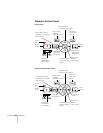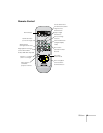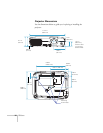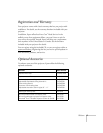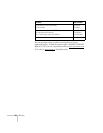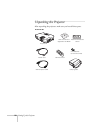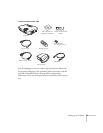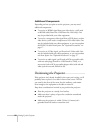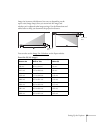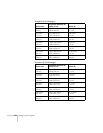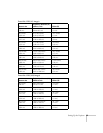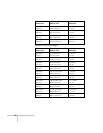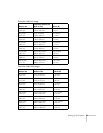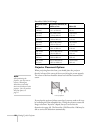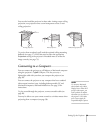
22 Setting Up the Projector
Additional Components
Depending on how you plan to use the projector, you may need
additional components:
■ To receive an HDMI signal from your video device, you’ll need
an HDMI cable (PowerLite 1220/PowerLite 1260 only). One
may be provided with your video equipment.
■ To receive a component video signal from a DVD player or other
video device, you’ll need a component-to-VGA video cable. One
may be included with your video equipment, or you can purchase
the ELPKC19 cable from Epson. See “Optional Accessories” on
page 17.
■ To receive an S-Video signal, you’ll need an S-Video cable. One
may be included with your video equipment, or you can purchase
one from Epson. See “Optional Accessories” on page 17.
■ To receive an audio signal, you’ll need an RCA-type audio cable
with two male plugs (PowerLite 1220/PowerLite 1260), or a
stereo mini-jack to RCA-type audio adapter cable (with red and
white jacks on one end; PowerLite S9).
Positioning the Projector
If the projector isn’t already installed in the room you’re using, you’ll
probably want to place it on a table in front of the screen. This lets
you stand in the front of the room, face the audience, and remain
close enough to the equipment to be able to control it.
Keep these considerations in mind as you position the projector:
■ Place the projector on a sturdy, level surface.
■ Make sure there is plenty of space for ventilation around and
under the projector.
■ Make sure the projector is within 5.9 feet (1.8 meters) of a
grounded electrical outlet or extension cord.



